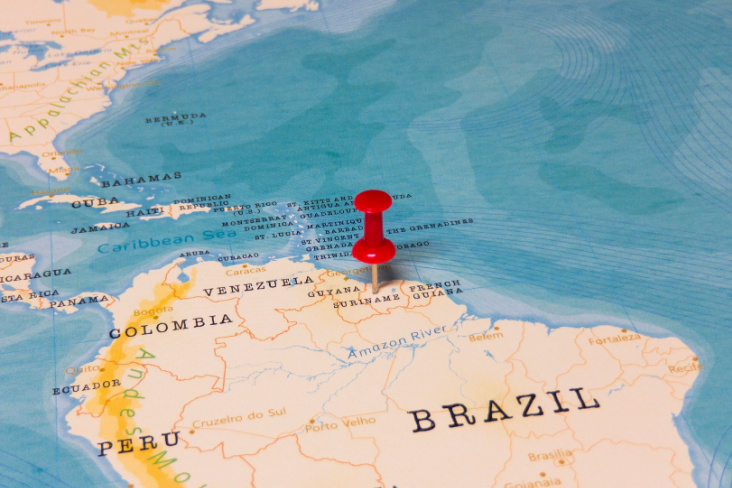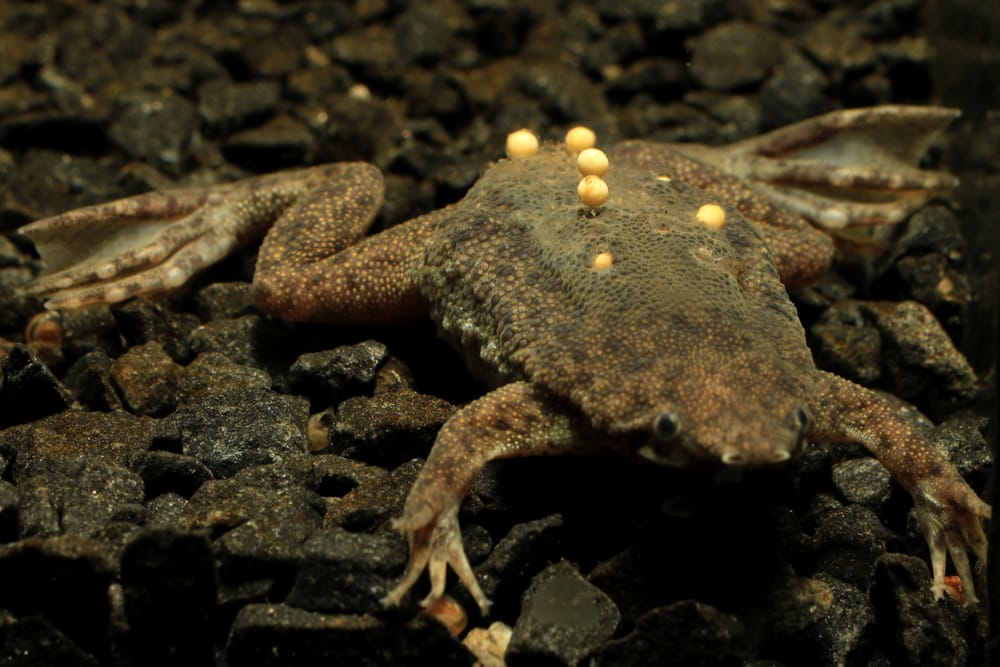The most interesting facts about Suriname include corrupt officials, an enormous rainforest and some truly bizarre wildlife.

Fast facts
Official name: Republic of Suriname
Capital city: Paramaribo
Population: 609,569
Area: 163,820 sq km
Major languages: Dutch, English, Sranang Tongo, Caribbean Hindustani, Javanese
Major religions: Christianity, Islam
Time zone: UTC-3 (Suriname Time)
(Source: CIA World Fact Book)
Interesting facts about Suriname
1. Suriname was initially inhabited by Native American peoples including the Arawak, the Carib and the Surinen – from whom the country’s name descends.
(Source: Britannica)
2. In 1498, Christopher Columbus was the first European to sight the coast of Suriname.
(Source: Britannica)
3. In 1593 Spanish explorers visited the region and named it Suriname after the Surinen people.
(source: BBC News)

4. The British once controlled parts of Suriname but in 1667 they swapped their share with the Netherlands in exchange for New Amsterdam – which would become New York City.
(Source: BBC News)
5. The country was once known as Dutch Guiana. In 1954 it was given full autonomy and in 1975 the country finally became entirely independent.
(Source: New York Times, BBC News)
6. The Surinamese flag was adopted in 1975. In the centre is a yellow star that symbolises the unity of the country, its golden future and the spirit of sacrifice required to achieve that goal. Behind the star are stripes: green denotes the country’s jungles and agricultural land, white represents justice and freedom and red embodies the progressive spirit of the young country.
(Source: Wanderlust (2021) Flags, Capitals and Countries of the World: The Complete Handbook. Wanderlust Press: London)

7. From 1975 onwards, Suriname suffered from a number of destabilising coups and a civil war. Since the 1990s the country has stabilised and returned to civilian rule.
(Source: BBC News)
8. Desi Bouterse led Suriname through the 1980s as head of a military government. He regained office in 2010 through elections and was then re-elected in 2015
(Source: BBC News)
9. In 1999, Bouterse was convicted by a Dutch court for cocaine trafficking and sentenced to 11 years in prison. Since then he has avoided visiting countries that have extradition treaties with the Netherlands.
(Source: The Guardian)

10. In 2019, Bouterse was convicted by a Surinamese court of executing 15 political opponents in 1982. He was sentenced to 20 years in prison.
(Source: The Guardian)
11. Suriname is the smallest independent country in South America. French Guiana is smaller but it is an overseas department of France.
(Source: CIA World Fact Book)
12. Around four-fifths (80%) of the country is tropical rainforest.
(Source: Britannica)

13. The main export of Suriname is gold. At $1.81 billion it accounts for 67% of the country’s total exports.
(Source: OEC)
14. Suriname has two UNESCO World Heritage Sites: the Central Suriname Nature Reserve and the Historic Inner City of Paramaribo.
(Source: UNESCO)
15. The Central Suriname Nature Reserve, at 16,000 sq km, covers around 11% of Suriname’s land area and is home to over 5,000 plant species and 400 bird species.
(Source: UNESCO)

16. During a 2013 expedition to Suriname, biologists discovered 60 new species including six frogs, one snake and eleven fish.
(Source: The Telegraph, The Guardian)
17. Until the mid-19th century, slaves imported from West Africa constituted the majority of the population of Suriname.
(Source: Britannica)
18. Slavery was abolished in Suriname in 1863. To supplement the labour force, workers from India and the Indonesian island of Java were recruited to replace former slaves.
Olympic gold medallist in the 100-metre butterfly event in 1988.
19. Anthony Nesty is Suriname’s first and only Olympic champion. He won the gold medal in the 100m butterfly event at the 1988 Seoul Olympic Games. At the 1992 Barcelona Olympics, he also won bronze.
(Source: International Olympic Committee)

20. Piracy continues to be an issue in the waters off Suriname. In 2018, at least 12 fishermen were killed off its coast during an attack.
(Source: Reuters)
21. In 1989, 176 people were killed when Surinam Airways Flight 764 crashed in Paramaribo. 15 Surinamese-Dutch footballers, part of a team known as the ‘Colourful 11’, also died.
(Source: The Guardian)
22. Suriname is the only country in South America with Dutch as its official language. It makes Dutch the 10th most widely spoken language on the continent.
(Source: Babbel, University College London)
We have tried hard to verify these facts about Suriname using only primary sources. However, if you find an error, please let us know.